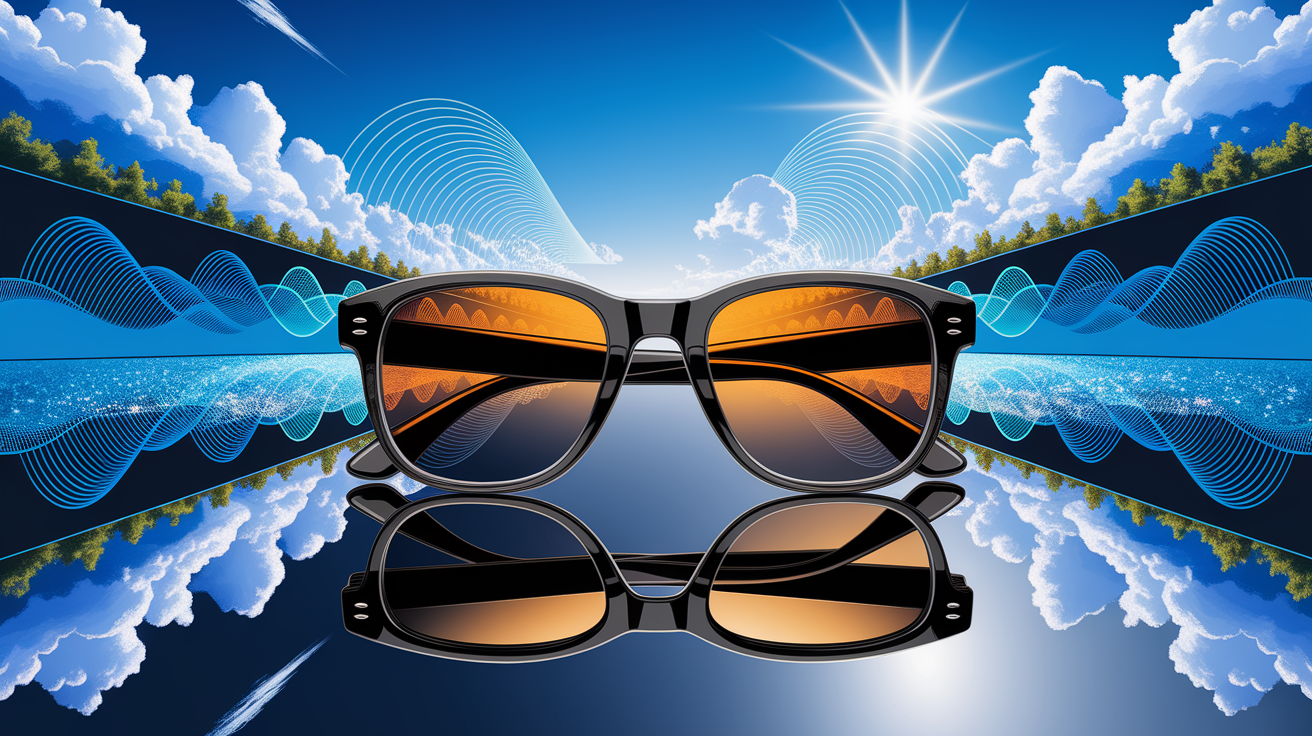Quick Answer: Polarized sunglasses work by using a special filter that blocks harsh horizontal light waves—often responsible for glare—while letting in useful vertical light. This reduces eye strain, sharpens vision, and makes outdoor scenes look crisp and comfortable to the eyes.
Introduction: See Every Detail Without the Glare
Whether you’re driving on a sunny afternoon, fishing on a gleaming lake, or walking across a snow-dusted field, sunlight bouncing off shiny, flat surfaces can make you squint and lose visual detail. That blinding reflection is more than just annoying—it can be a safety hazard and a real strain on your eyes. Thankfully, with the magic of polarization, sunglasses can cut through the glare and reveal exactly what’s in front of you in vivid detail.

Why Glare Happens
Light usually travels in waves vibrating in many different directions. But when sunlight bounces off flat, reflective surfaces like water, roads, or snow, something changes. The reflected light waves become polarized, meaning they align predominantly in a horizontal direction. This concentrated horizontal light is what we experience as glare: intense, harsh, and often blinding. It overwhelms your vision and washes out contrast, making it difficult to see hazards or enjoy the view.

The Picket Fence Filter
Polarized sunglasses have a hidden hero: a microscopic structure inside the lens that works like an optical “picket fence.” This filter, created by aligning molecules vertically during lens manufacturing, blocks horizontally polarized light while allowing vertical light to pass. Think of vertical slats on an actual fence—if you try to push a horizontal stick through, it won’t fit, but a vertical stick slides right in. This selective light filtering is the key to glare reduction.

Scientifically speaking, this is all about controlling light transmission. By absorbing the intense horizontal reflections, polarized lenses improve contrast, reduce eye fatigue, and make colors appear richer and more defined—making every scene look more natural and easier to interpret.
Testing Polarization in Your Sunglasses
Want to know if your sunglasses are truly polarized? Here are two simple tests:

- LCD Screen Test: Hold your sunglasses in front of a phone or laptop screen. Tilt them sideways—if they’re polarized, the screen should darken significantly at certain angles.
- Lens Rotation Test: Place two pairs of polarized lenses in front of each other, then slowly rotate one lens 90 degrees. If they go nearly black, the polarization is real. This works because the vertical filter of one lens and the rotated filter of the other block nearly all light.
Everyday Benefits of Polarized Lenses
Polarized sunglasses aren’t just a luxury—they’re a game changer for eye comfort and safety. Here’s why they’re loved by so many outdoor enthusiasts:

- Driving Safety: Reduces glare from wet roads and car hoods, helping drivers spot hazards faster.
- Water Sports and Fishing: Cuts through surface reflections so you can see beneath the water’s surface—essential for spotting fish or underwater features.
- Snow Clarity: Minimizes snow glare for skiers and snowboarders, improving terrain visibility.
- Eye Health: Many polarized lenses also provide 100% UV protection, shielding eyes from harmful ultraviolet rays.
- Visual Comfort: Less squinting means reduced eye strain during long periods outdoors.
Conclusion: Clear Vision Ahead
Polarized sunglasses combine clever optical physics with practical benefits, turning blinding reflections into crystal-clear views. By filtering out horizontal glare before it even reaches your eyes, they make driving safer, outdoor sports more enjoyable, and everyday moments brighter and more comfortable. The next time the sun strikes just the right flat angle to dazzle you, a good pair of polarized lenses will let you see past the shine and enjoy the world in brilliant detail.













